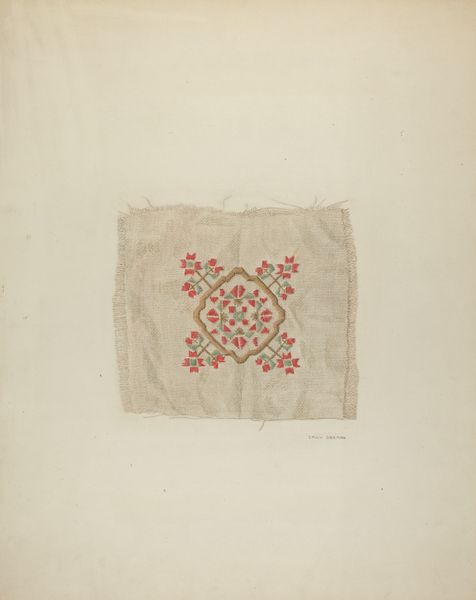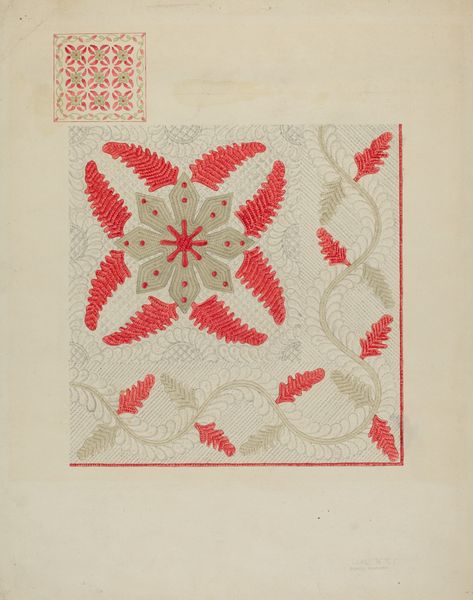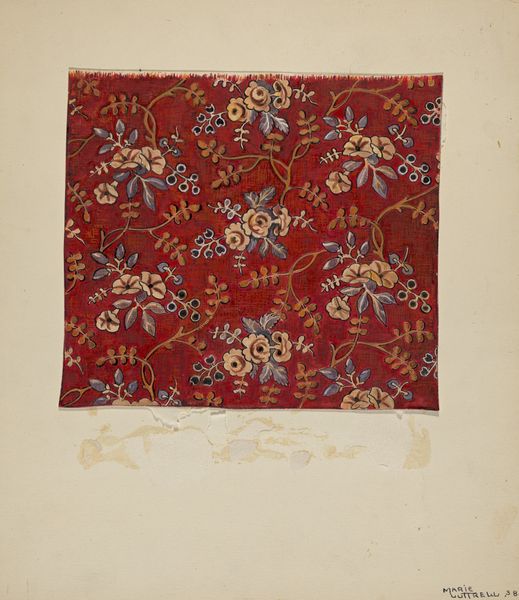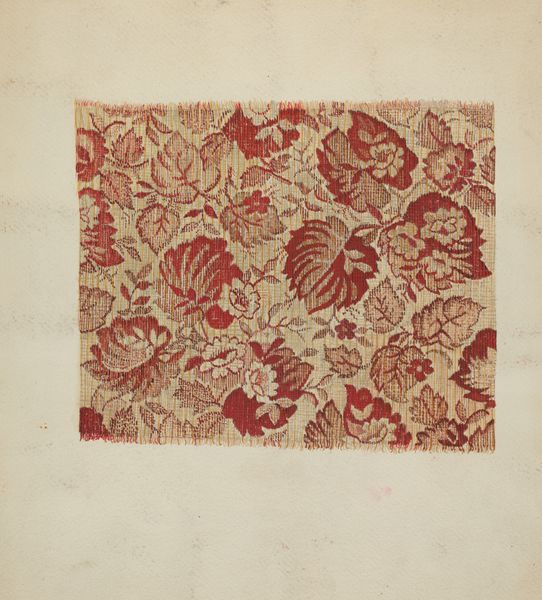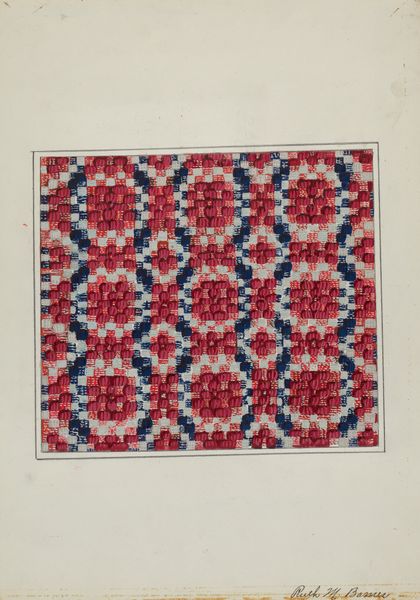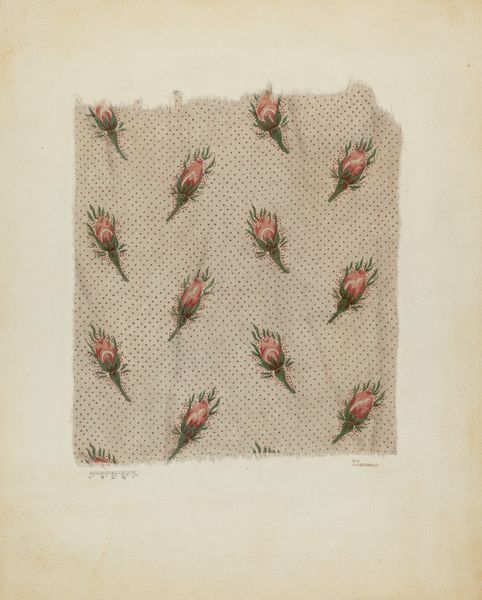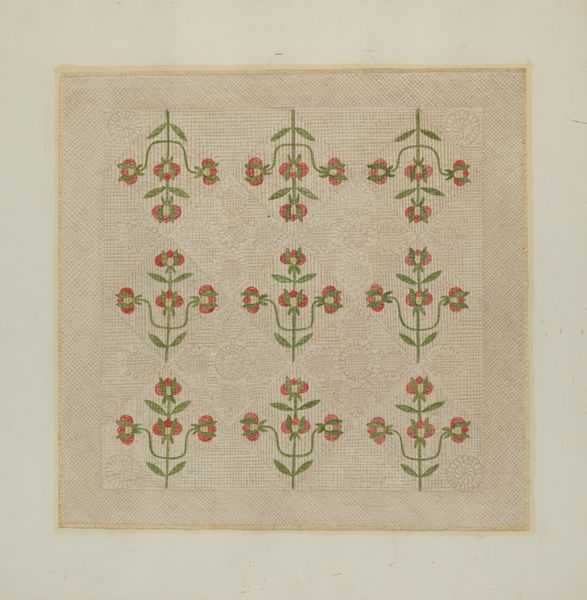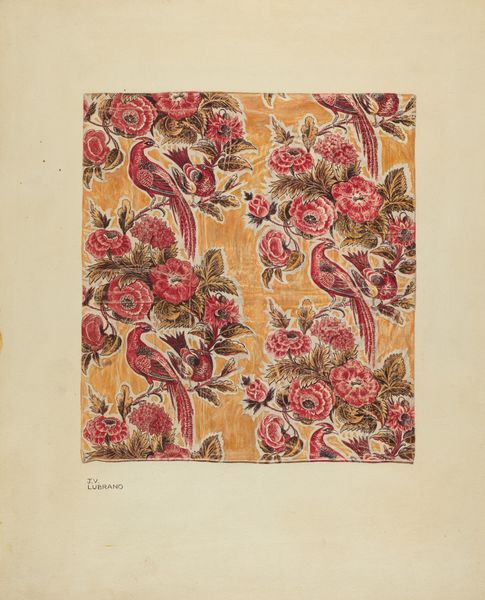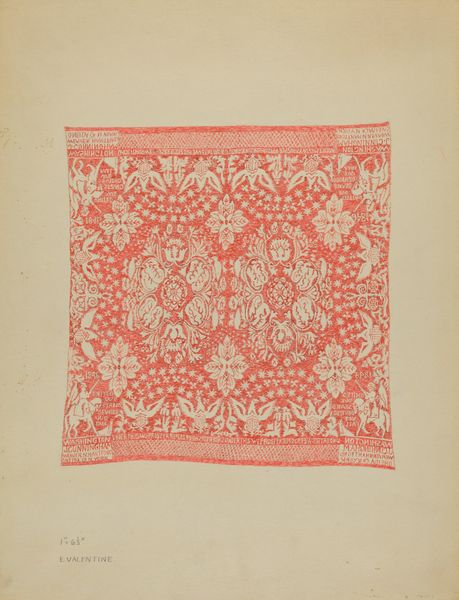
drawing, paper, watercolor
#
drawing
#
water colours
#
paper
#
watercolor
#
geometric
#
watercolour illustration
#
decorative-art
Dimensions: overall: 28.8 x 22.9 cm (11 5/16 x 9 in.)
Copyright: National Gallery of Art: CC0 1.0
Curator: Here we have “Lining of Baby’s Hood,” a watercolor and pencil drawing on paper created around 1937 by Florence Earl. What’s your initial take on this piece? Editor: My first impression is gentleness. It’s repetitive, but not in a harsh, mass-produced way. More like the soothing rhythm of rocking a baby, with warm color palette in faded reds. The overall feeling is quiet tenderness. Curator: Absolutely. Considering its function, that makes sense. When you look closer, those little red motifs look quite like stylized cherries, or perhaps even stylized hearts, connected by sinuous lines. I can imagine this adding a sweet, comforting detail to a baby’s world. Editor: The cherry or heart shapes read as powerful symbols, really. In various cultures, they represent not only love and innocence, but also renewal and protection. Lining a baby’s hood with these would act almost like a talisman. Curator: Interesting thought. I’m wondering about Earl's choice to depict this pattern in watercolor rather than the real material it would be crafted on. It feels so transient. Editor: Yes, there’s something ghostly about the whole thing, preserved on this thin paper. It’s a gentle, homespun beauty, all rendered with incredible grace. You almost feel like it is part of memory fading over time Curator: Like a collective memory? What resonates is its quiet universality, even for those without any memories or connections to the historical hood. Editor: Exactly, as the symbol evolves through different times, contexts, beliefs and experiences, you are connecting in someway. Curator: That’s so insightful. I come away sensing the warmth of this. Like that unconditional nurturing affection it can elicit, a feeling distilled into visual pattern. Editor: Me too. Now I can't help to ponder the potential weight of those early, formative influences of symbols.
Comments
No comments
Be the first to comment and join the conversation on the ultimate creative platform.
